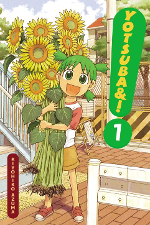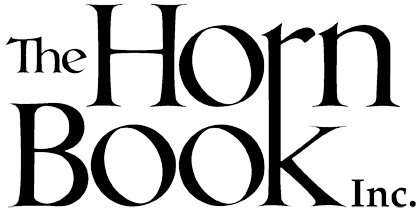
Find more great Horn Book content at these links:
Recommended books: reviews and themed booklists
App and e-book reviews
Movie reviews
Event news and recaps
Events calendar
Manga roundup
When I worked as a bookseller, I was often asked about manga appropriate for young readers. Even though I am an avid manga reader, it was sometimes difficult for me to provide concrete recommendations. Each of these series can act as a gateway into the world of manga, in which there is truly something for everyone!
When I worked as a bookseller, I was often asked about manga appropriate for young readers. Even though I am an avid manga reader, it was sometimes difficult for me to provide concrete recommendations. Manga series are often long; series generally come in around twelve to twenty-five volumes total, and many have much more. The themes in these longer series often mature as they go on, so titles that seemed age appropriate at first might be less so once you reach volume 22. Many children are eager to pick up manga that their favorite anime is adapted from; however, many of those series, such as Jujutsu Kaisen, Demon Slayer: Kimetsu no Yaiba, and My Hero Academia, are ones in which the themes and content become more adult in later volumes. For that reason, even though these are all manga series worth reading, I would hesitate to recommend them to most young readers, especially those who have never encountered manga before.
Just like comics or graphic novels, manga requires a certain level of visual literacy and the ability to understand panel flow that can be complicated and, at times, abstract. Additionally (most) manga reads right to left, so series that are both thematically and visually challenging can hinder enjoyment of this varied medium for anyone (not just younger readers) who is not used to this format. At the same time, manga can be a wonderful tool in strengthening these skills and in expanding readers’ knowledge of diverse forms of storytelling.
With these considerations in mind, I’ve ordered my recommendations below from youngest to oldest in reading level, focusing on series that maintain a similar tone throughout volumes. Each of these series can act as a gateway into the world of manga, in which there is truly something for everyone!
 The Complete Chi’s Sweet Home
The Complete Chi’s Sweet Home
by Konami Kanata; Vertical Comics
(Easy Reader, Younger Fiction)
In short, easy-to-read chapters, Chi, a stray kitten, is separated from her mother. She is adopted by the Yamada family, in whose home she learns how to become a proper house cat. Simple vocabulary and panels that read left to right (unlike traditional manga which reads right to left) make this slice-of-life manga perfect for young readers new to the genre.
 Yotsuba&!
Yotsuba&!
by Kiyohiko Azuma; Yen Press
(Younger Fiction)
This manga series follows five-year-old Yotsuba Koiwai and her adoptive father as they move to a new town full of places to see, people to meet, and things to learn. Her curiosity about the world often results in humorous situations that highlight her unfamiliarity regarding topics such as television, air conditioners, and cicada-hunting. Each volume is structured like a typical early chapter book, with chapters acting as self-contained stories.
 Nicola Traveling Around the Demons’ World
Nicola Traveling Around the Demons’ World
by Asaya Miyanaga; Seven Seas
(Younger Fiction)
As the title suggests, Nicola, a human girl, is traveling around a demon-filled world — don’t be put off by the word demon, though. The demons and monsters Nicola encounters are not meant to be overly scary or threatening; one chapter centers around ghosts who wish to befriend the guests of the hotel they haunt, but everyone (including Nicola at first) is too frightened of them. Nicola is an intrepid, likeable protagonist, classically optimistic but with a mysterious past that will keep readers interested in her antics. The artwork, more western and fairytale-like in style (think Barker’s Flower Fairies), is stunningly rendered in this cozy and imaginative series.
Witch Hat Atelier 
by Kamome Shirahama; Kodansha
(Intermediate)
Coco has always dreamed of becoming a witch, but when she comes across a tome of spells, along with the pen and ink to draw them, she accidently turns her mother to stone. Whisked away to a witch’s atelier, Coco learns the secrets of this drawing-based magic system in hopes of saving her mother. The story only grows more compelling from there. Themes of friendship, work ethic, and morality unfold in this inventive magical world with complex characters and intricate world-building. Shirahama’s artwork is as whimsical and detailed as her storytelling, and she is well-known in the United States for having drawn variant covers for Marvel (including Star Wars) and DC comics. This is a series that grows more serious as the story progresses; some heavier themes are discussed in later volumes, such as sexual assault, but nothing explicit is ever shown.
 Haikyu!!
Haikyu!!
by Haruichi Furudate; Viz Media
(Intermediate, Older)
Shoyo Hinata joins his high school volleyball team with dreams of becoming a star, but because of his short height, he faces obstacles both physical and mental. Even if you aren’t a volleyball fan — or a sports fan for that matter (though you might become both after reading this series) — there is so much to enjoy as we follow Hinata and his team on their journey to be the best. The game scenes are beautifully illustrated, tense, and exciting, and Haikyu!! truly shines in its exploration of friendship, teamwork, and confrontation of physical, personal, and mental limitations. Humor, hard work, and heartbreak abound. Furudate is a master at evoking sympathy, even for the rival team. One of my favorite things about this series is how the losing team (both when it is Hinata’s team or the opposition) is often depicted crying. Especially in a manga featuring boys, it’s such a welcome expression of passion and vulnerability within a demographic that isn’t often afforded such moments.

ALREADY A SUBSCRIBER? LOG IN
We are currently offering this content for free. Sign up now to activate your personal profile, where you can save articles for future viewing.







Add Comment :-
Be the first reader to comment.
Comment Policy:
Comment should not be empty !!!